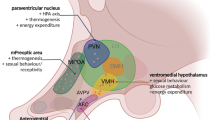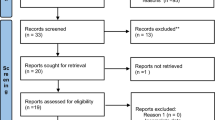Abstract
Background
Cell physiology is regulated along the 24-h time scale by a circadian timing system composed of molecular clocks within each cell and a central coordination system in the brain. The mammalian molecular clock is made of interconnected molecular loops involving at least 12 circadian genes. The cellular clocks are coordinated by the suprachiasmatic nuclei, a hypothalamic pacemaker which also helps the organism adjust to environmental cycles. The rest–activity rhythm is a reliable marker of the circadian system function in both rodents and man. This circadian organization is responsible for predictable changes in the tolerability and efficacy of anticancer agents, and possibly also in tumor promotion or growth.
Methods
Expected least toxic times of chemotherapy were extrapolated from experimental models to human subjects with reference to the rest–activity cycle. The clinical relevance of the chronotherapy principle, i.e. treatment administration as a function of rhythms, has been demonstrated in randomized multicenter trials.
Results
Chronotherapeutic schedules have been used to safely document the activity of the association of oxaliplatin, 5-FU and leucovorin against metastatic colorectal cancer and to set up a new medicosurgical management of this disease which achieved unprecedented long term survival.
Conclusion
The chronotherapy concept offers further promises for improving current cancer treatment options as well as for optimizing the development of new anticancer or supportive agents








Similar content being viewed by others
References
Hastings MH, Reddy AB, Maywood ES (2003) A clockwork web: circadian timing in brain and periphery, in health and disease. Nat Rev Neurosci 4:649–661
Vitaterna MH, King DP, Chang AM, etal. (1994) Mutagenesis and mapping of a mouse gene, Clock, essential for circadian behavior. Science 264:719–725
Reppert SM, Weaver DR (2002) Coordination of circadian timing in mammals. Nature 418(6901):935–941
Toh KL, Jones CR, He Y, etal. (2001) An hPer2 phosphorylation site mutation in familial advanced sleep phase syndrome. Science 291(5506):1040–3
Schibler U, Sassone-Corsi P (2002) A web of circadian pacemakers. Cell 111(7):919–922
Klein DC, Moore RY, Reppert SM (1991) Suprachiasmatic Nucleus, the Mind’s Clock. Oxford University Press, Oxford, 467 pp
Rosenwasser AM, Wirz-Justice A (1997) Circadian rhythms and depression: clinical and experimental models. In: Redfern P, Lemmer B (eds) Physiology and Pharmacology of Biological Rhythms. Springer-Verlag, Berlin, pp 457–485
Scheving LE, Burns ER, Pauly JE, Tsai TH (1978) Circadian variation in cell division of the mouse alimentary tract, bone marrow and corneal epithelium. Anat Rec 191:479–486
Bjarnason GA, Jordan R (1999) Circadian variation in the expression of cell-cycle proteins in human oral epithelium. Am J Pathol 154(2):613–622
Smaaland R, Laerum OD, Lote K, Sletvold O, Sothern RB, Bjerknes R (1991) DNA synthesis in human bone marrow is circadian stage dependent. Blood 77:2603–2611
Granda TG, Lévi F (2002) Tumor-based rhythms of anticancer efficacy in experimental models. Chronobiol Int 19(1):21–41
Fu L, Pelicano H, Liu J, Huang P, Lee CC (2002) The circadian gene Period2 plays an important role in tumor suppression and DNA damage response in vivo. Cell 111:41–50
Matsuo T, Yamaguchi S, Mitsui S, Emi A, Shimoda F, Okamura H (2003) Control mechanism of the circadian clock for timing of cell division in vivo. Science 302(5643):255–259
Matsumura I, Tanaka H, Kanakura Y (2003) E2F1 and c-Myc in cell growth and death. Cell Cycle 2:333–338
Hofsethh LJ, Hussain SP, Harris CC (2004) P53/ 25 years after its discovery. Trends Pharmacol Sci 25:177–181
Kellog DR (2003) Wee1-dependent mechanisms required for coordination of cell growth and cell division. J Cell Sci 116:4883–4890
Granda TG, Liu XH, Cermakian N, etal. (2005) Circadian regulation of cell cycle and apoptosis proteins in mouse bone marrow and tumour. FASEB J 19(2):304–306
van der Horst GT, Muijtjens M, Kobayashi K, etal. (1999) Mammalian Cry1 and Cry2 are essential for maintenance of circadian rhythms. Nature 398(6728):627–630
Lévi F (1997) Chronopharmacology of anticancer agents. In: Redfern P, Lemmer B (eds) Physiology and Pharmacology of Biological Rhythms. Springer-Verlag, Berlin, pp. 299–331
Boughattas N, Levi F, Fournier C, etal. (1989) Circadian rhythm in toxicities and tissue uptake of 1,2-diamminocyclohexane (trans-1) oxalatoplatinum (II) in mice. Cancer Res 49:3362–3368
Boughattas N, Lévi F, Fournier C, etal. (1990) Stable circadian mechanisms of toxicity of two platinum analogs (cisplatin and carboplatin) despite repeated dosages in mice. J Pharmacol Exp Ther 255(2):672–679
Lévi F (2003) Circadian rhythms in 5-fluorouracil pharmacology and therapeutic applications. In: Rustum Y (ed) Fluoropyrimidines in Cancer Therapy. The Humana Press Inc, New Jersey, USA, pp 107–128
Filipski E, Amat S, Lemaigre G, Vincenti M, Breillout F, Lévi F (1999) Relationship between circadian rhythm of vinorelbine toxicity and efficacy in P388-bearing mice. J Pharmacol Exp Ther 289:231–235
Granda TG, Filipski E, D’Attino RM, etal. (2001) Experimental chronotherapy of mouse mammary adenocarcinoma MA13/C with docetaxel and doxorubicin as single agents and in combination. Cancer Res 61:1996–2001
Granda TG, D’Attino RM, Filipski E, etal. (2002) Circadian optimization of irinotecan and oxaliplatin efficacy in mice with Glasgow osteosarcoma. Br J Cancer 86(6):999–1005
Focan C, Doalto L, Mazy V, etal. (1989) Vindesine en perfusion continue de 48 heures (suivie de cisplatine) dans le cancer pulmonaire avancé. Données chronopharmacocinétiques et efficacité clinique. Bull Cancer 76:909–912
Squalli A, Oustrin J, Houin G, etal. (1989) Clinical chronopharmacokinetics of doxorubicin (DXR). Ann Rev Chronopharmacol 5:393–396
Harris B, Song R, Soong S, Diasio RB (1990) Relationship between dihydropyrimidine dehydrogenase activity and plasma 5-fluorouracil levels: evidence for circadian variation of plasma drug levels in cancer patients receiving 5-fluorouracil by protracted continuous infusion. Cancer Res 50:197–201
Smaaland R, Laerum OD, Lote K, Sletvold O, Sothern RB, Bjerknes R (1991) DNA synthesis in human bone marrow is circadian stage dependent. Blood 77:2603–2611
Buchi KN, Moore JG, Hrushesky WJM, Sothern RB, Rubin NH (1991) Circadian rhythm of cellular proliferation in the human rectal mucosa. Gastroenterology 101:410–415
Bjarnason GA, Jordan R (2000) Circadian variation of cell proliferation and cell protein expression in man : clinical implications. In: Meijer L, Jézéquel A, Ducommun B (eds) Progress in Cell Cycle Research. vol 4. Kluwer Academic, New York, pp 193–206
Filipski E, King VM, Etienne MC, etal. (2004) Persistent twenty-four hour changes in liver and bone marrow despite suprachiasmatic nuclei ablation in mice. Am J Physiol Regul Integr Comp Physiol 287:R844-R851
Focan C (1979) Sequential chemotherapy and circadian rhythm in human solid tumors. Cancer Chemother Pharmacol 3:197–202
Rivard G, Infante-Rivard C, Hoyoux C, Champagne J (1985) Maintenance chemotherapy for childhood acute lymphoblastic leukemia: better in the evening. Lancet 2(8467):1264–1266
Schmiegelow K, Glomstein A, Kristinsson J, Salmi T, Schroder H, Bjork O (1997) Impact of morning versus evening schedule for oral methotrexate and 6-mercaptopurine on relapse risk for children with acute lymphoblastic leukemia Nordic Society for Pediatric Hematology and Oncology (NOPHO). J Pediatr Hematol Oncol 19(2):102–109
Hrushesky W (1985) Circadian timing of cancer chemotherapy. Science 228:73–75
Lévi F, Benavides M, Chevelle C, etal. (1990) Chemotherapy of advanced ovarian cancer with 4’-0-tetrahydropyranyl adriamycin (THP) and cisplatin: a phase II trial with an evaluation of circadian timing and dose intensity. J Clin Oncol 8:705–714
Lévi F (2001) Circadian chronotherapy for human cancers. Lancet Oncol 2:307–315
Mormont MC, Lévi F (2003) Cancer chronotherapy: principles, applications and perspectives. Cancer 97:155–169
Lévi F, Misset JL, Brienza S, etal. (1992) A chronopharmacologic Phase II clinical trial with 5-fluorouracil, folinic acid and oxaliplatin using an ambulatory multichannel programmable pump. High antitumor effectiveness against metastatic colorectal cancer. Cancer 69:893–900
Lévi F, Zidani R, Vannetzel JM, etal. (1994) Chronomodulated versus fixed infusion rate delivery of ambulatory chemotherapy with oxaliplatin, 5-fluorouracil and folinic acid in patients with colorectal cancer metastases. A randomized multiinstitutional trial. J Natl Cancer Inst 86:1608–1617
Lévi F, Zidani R, Misset JL for the International Organization for Cancer Chronotherapy (1997) Randomized multicentre trial of chronotherapy with oxaliplatin, fluorouracil, and folinic acid in metastatic colorectal cancer. Lancet 350:681–686
Lévi F, Zidani R, Brienza S, etal. (1999) A multicenter evaluation of intensified, ambulatory chronomodulated chemotherapy with oxaliplatin, 5-fluorouracil and leucovorin as initial treatment of patients with metastatic colorectal carcinoma. Cancer 85:2532–2540
Giacchetti S, Bjarnason G, Garufi C, etal. (2004) First line infusion of 5-fluorouracil, leucovorin and oxaliplatin for metastatic colorectal cancer:4-day chronomodulated (FFL4–10) versus 2-day FOLFOX2. A multicenter randomized Phase III trial of the Chronotherapy Group of the European Organization for Research and Treatment of Cancer (EORTC 05963). Proc Am Soc Clin Oncol 23:731
Giacchetti S, Itzhaki M, Gruia G, etal. (1999) Long term survival of patients with unresectable colorectal cancer liver metastases following infusional chemotherapy with 5-fluorouracil, leucovorin, oxaliplatin and surgery. Ann Oncol 10:663–669
Adam R, Delvart V, Pascal G, etal. (2004) Rescue surgery for non-resectable colorectal liver metastases downstaged by chemotherapy: a model to predict long-term survival. Ann Surg 240(4):644–658
Mormont MC, Lévi F (1997) Circadian-system alterations during cancer processes: a review. Int J Cancer 70:241–247
Smaaland R, Abrahamsen JF, Svardal AM, Lote K, Ueland PM (1992) DNA cell cycle distribution and glutathione (GSH) content according to circadian stage in bone marrow of cancer patients. Br J Cancer 66:39–45
Touitou Y, Bogdan A, Lévi F, Benavides M, Auzéby A (1996) Disruption of the circadian patterns of serum cortisol in breast and ovarian cancer patients. Relationships with tumor marker antigens. Br J Cancer 74:1248–1252
Sephton SE, Sapolsky RM, Kraemer HC, Spiegel D (2000) Diurnal cortisol rhythm as a predictor of breast cancer survival. J Natl Cancer Inst 92:994–1000
Mormont MC, Bleuzen P, Waterhouse J, etal. (2000) Marked 24-h rest/activity rhythms are associated with better quality of life, better response and longer survival in patients with metastatic colorectal cancer and good performance status. Clin Cancer Res 6:3038–3045
Mormont MC, Waterhouse J (2002) Contribution of the rest-activity circadian rhythm to quality of life in cancer patients. Chronobiol Int 19(1):313–323
Garufi C, Bjarnason G, Giacchetti S, etal. on behalf of the EORTC Chronotherapy Group (2005) Independent prognostic value of the rest/activity circadian rhythm on overall survival (OS) in patients (pts) with metastatic colorectal cancer (MCC) receiving first line chemotherapy with 5-fluorouracil, leucovorin and oxaliplatin: a companion study to EORTC 05963. Proc Am Soc Clin Oncol, 124:abstr 3553
Innominato PF, Focan C, Bjarnason GA, etal. on behalf of the EORTC Chronotherapy Group (2005) Quality of life (QoL) correlates with the rest/activity circadian rhythm (RAR) in patients (pts) with metastatic colorectal cancer (MCC) on first line chemotherapy with 5-fluorouracil, leucovorin and oxaliplatin: an international multicenter study (EORTC 05963). Proc Am Soc Clin Oncol 24:abstr 8029
Filipski E, King VM, Li XM, etal. (2002) Host circadian clock as a control point in tumor progression. J Natl Cancer Inst 94:690–697
Filipski E, Delaunay F, King VM, etal. (2004) Effects of chronic jet lag on malignant growth in mice. Cancer Res 64(21):7879–7885
Filipski E, Innominato PF, Wu MW, etal. (2005) Effects of light and food schedules on liver and tumor molecular clocks. J Natl Cancer Inst 97:507–517
Kramer A, Yang FC, Snodgrass P, etal. (2001) Regulation of daily locomotor activity and sleep by hypothalamic EGF receptor signaling. Science 294:2511–2515
Rich T, Innominato PF, Boerner MC, etal. (2005) Elevated serum cytokines correlated with altered behavior, serum cortisol rhythm, and dampened 24 hour rest–activity patterns in patients with metastatic colorectal cancer. Clin Cancer Res 11:1757–1764
Klevecz R, Shymko R, Braly P (1987) Circadian gating of S phase in human ovarian cancer. Cancer Res 47:6267–6271
Smaaland R, Lote K, Sothern RB, etal. (1993) DNA synthesis and ploidy in non-Hodgkin’s lymphomas demonstrate variation depending on circadian stage of cell sampling. Cancer Res 53:3129–3138
Nagoshi E, Saini C, Bauer C, Laroche T, Naef F, Schibler U (2004) Circadian gene expression in individual fibroblasts: cell-autonomous and self-sustained oscillators pass time to daughter cells. Cell 119(5):693–705
Author information
Authors and Affiliations
Corresponding author
Rights and permissions
About this article
Cite this article
Lévi, F. Chronotherapeutics: The Relevance of Timing in Cancer Therapy. Cancer Causes Control 17, 611–621 (2006). https://doi.org/10.1007/s10552-005-9004-7
Issue Date:
DOI: https://doi.org/10.1007/s10552-005-9004-7




